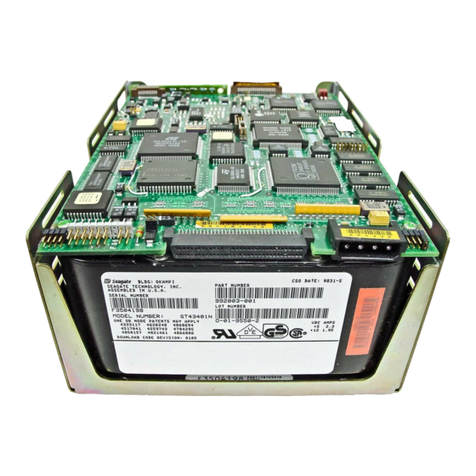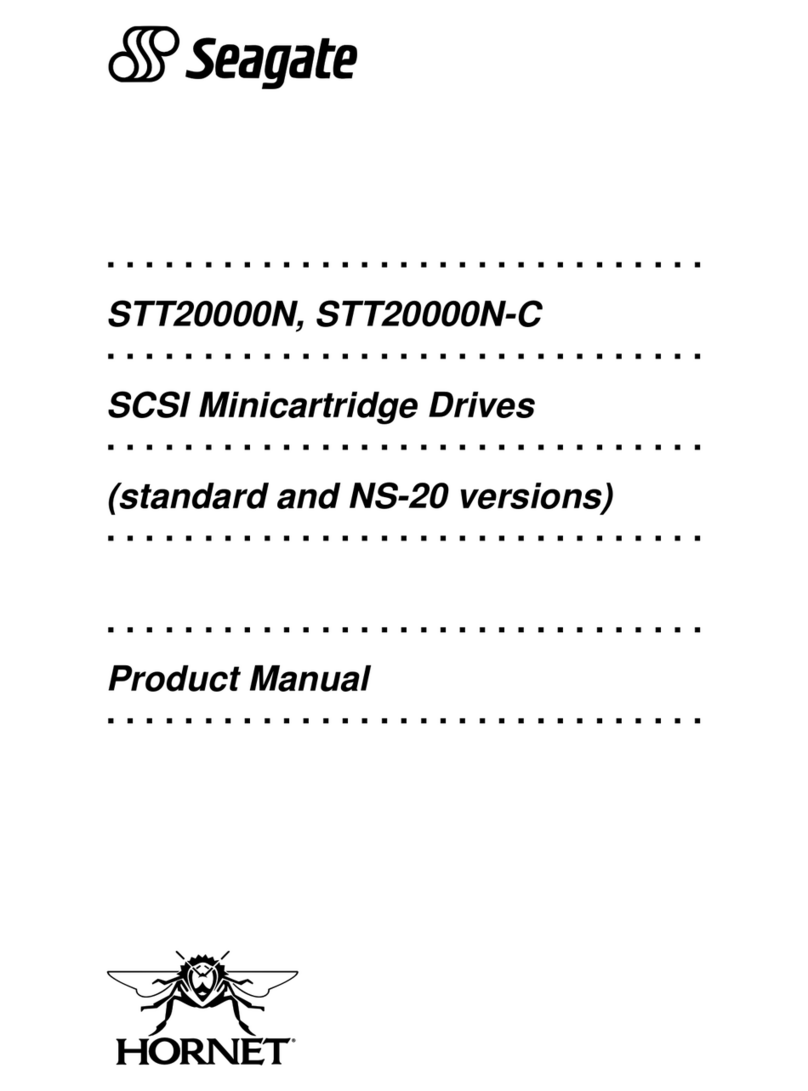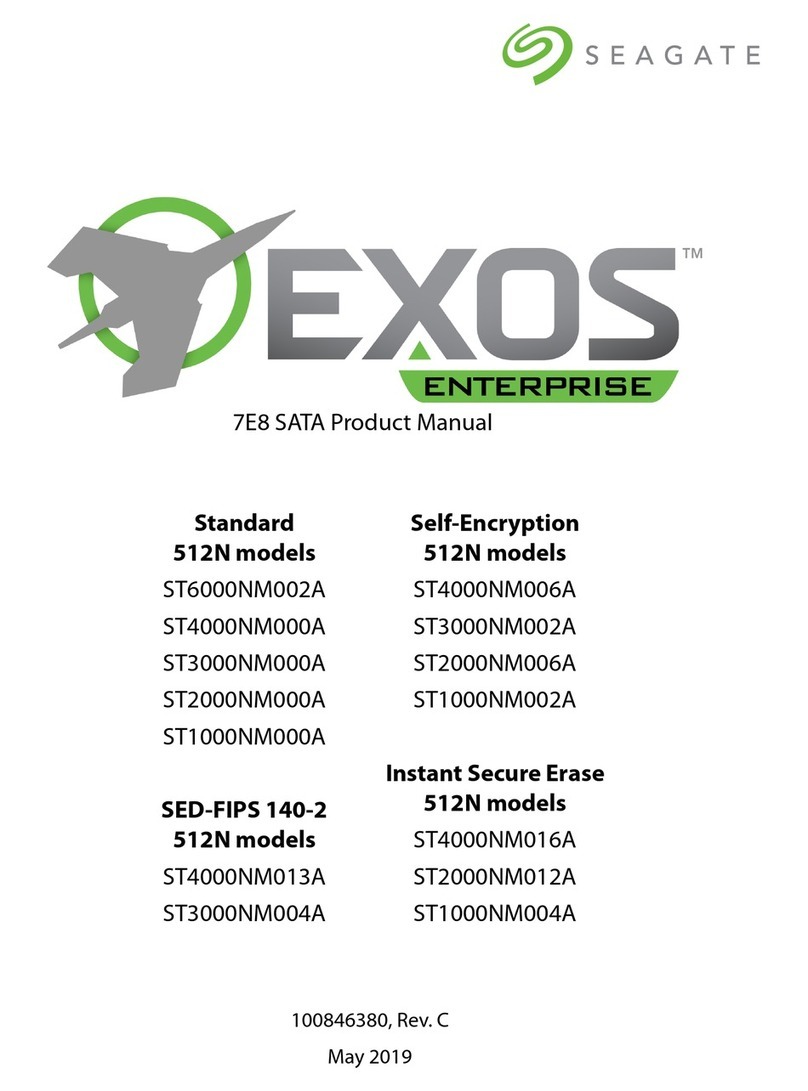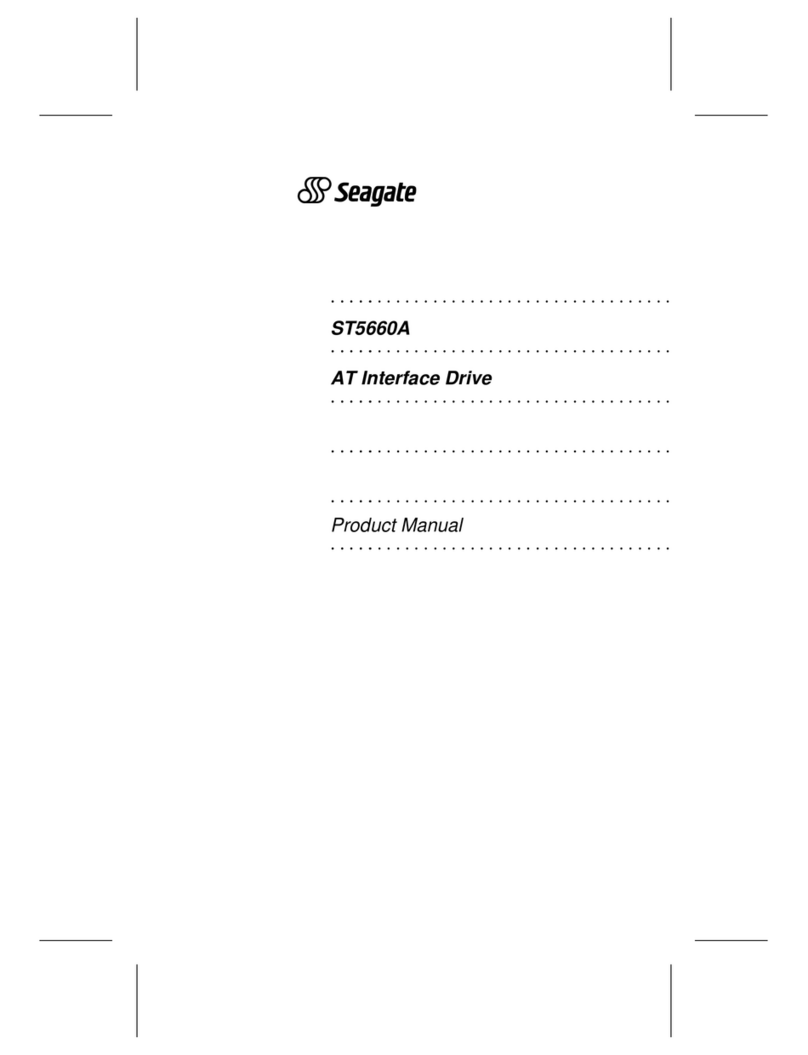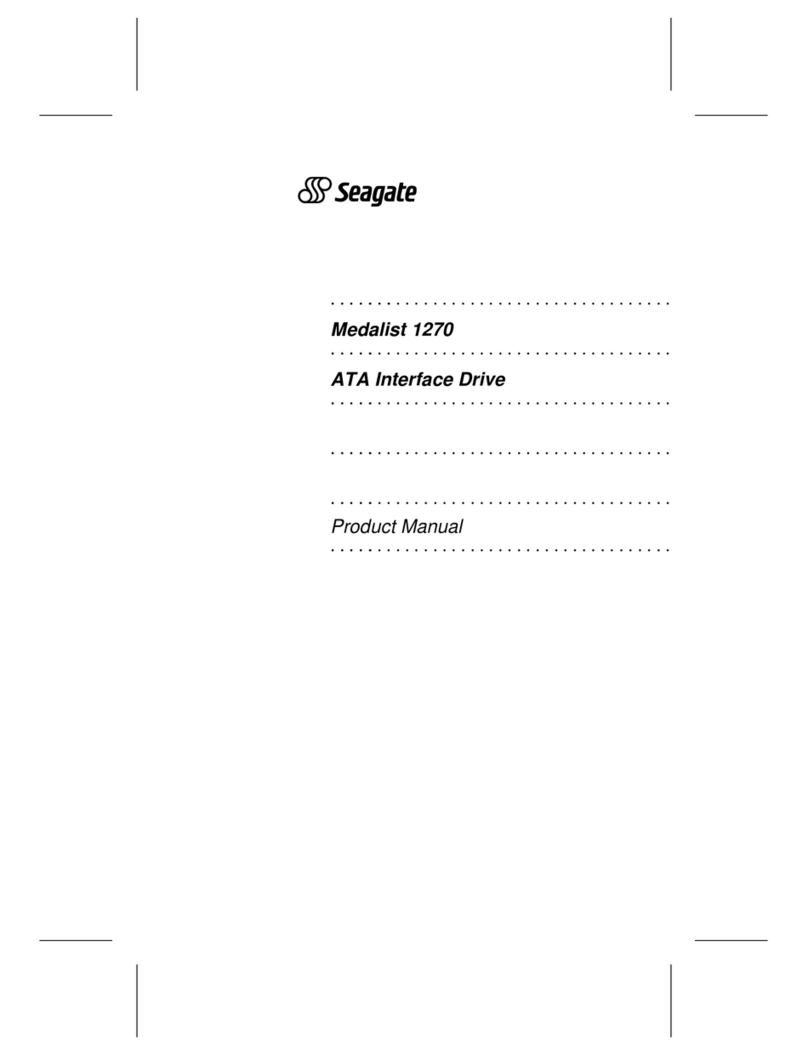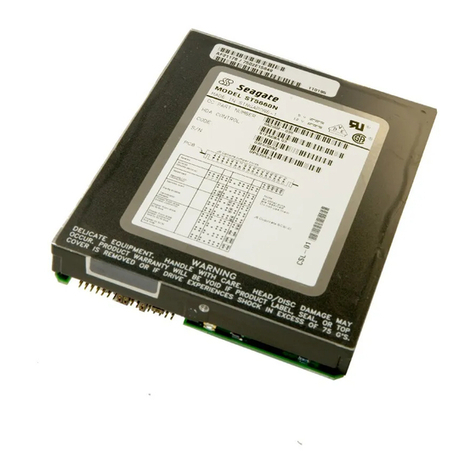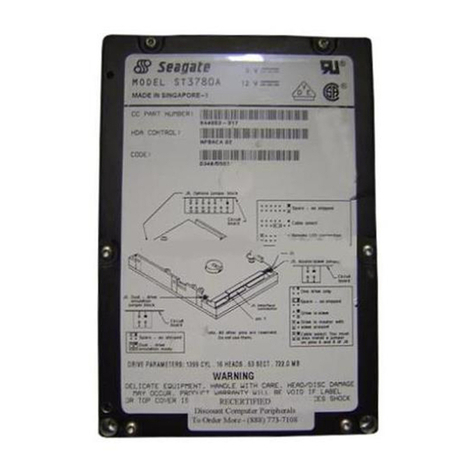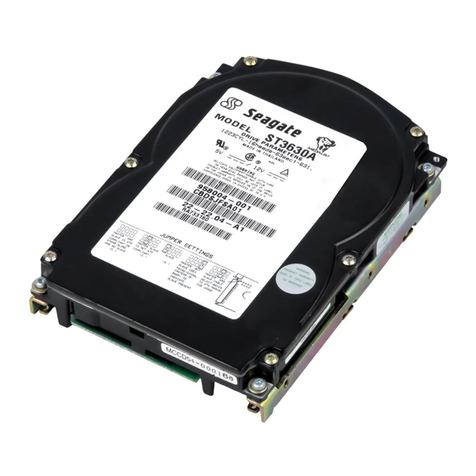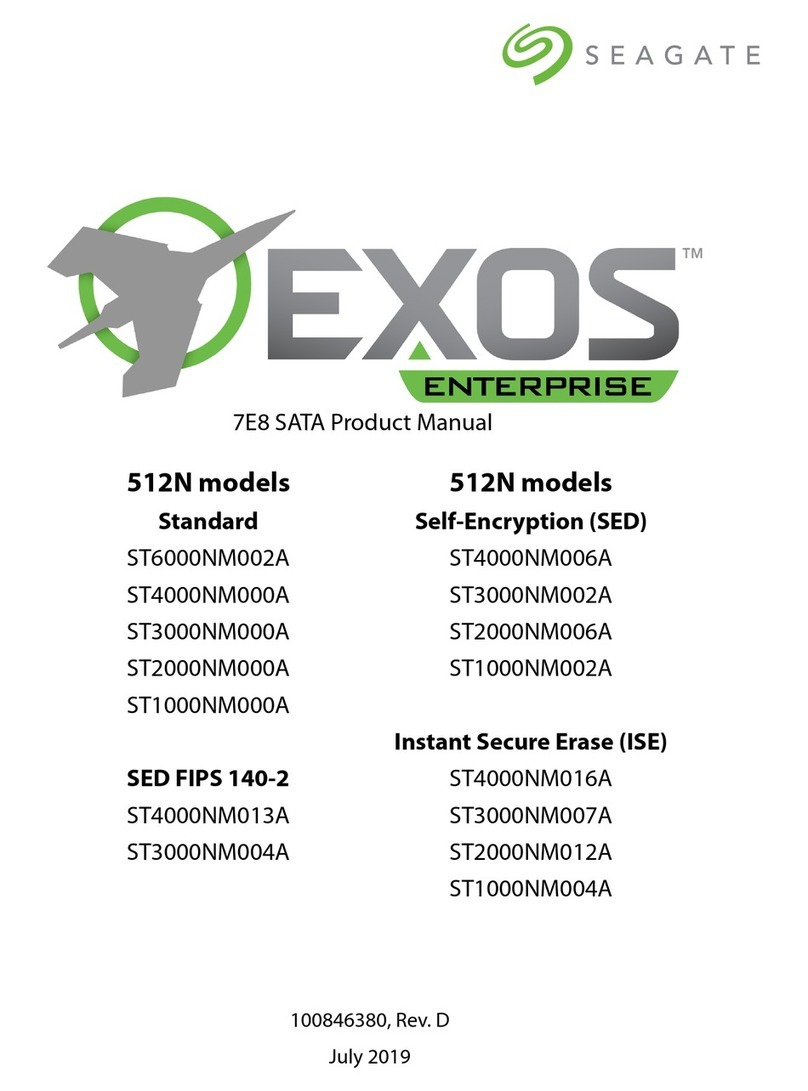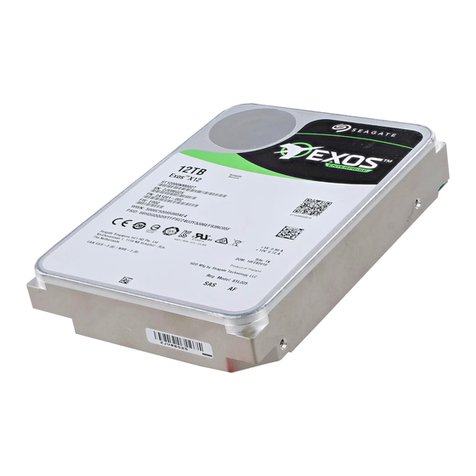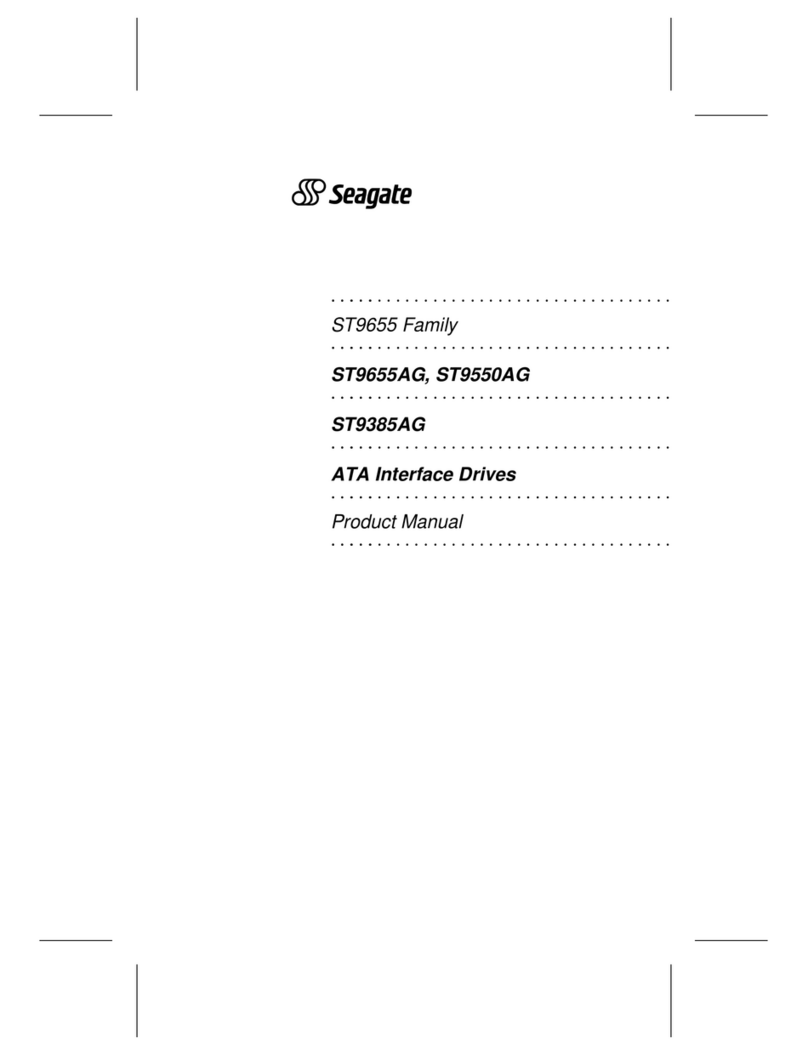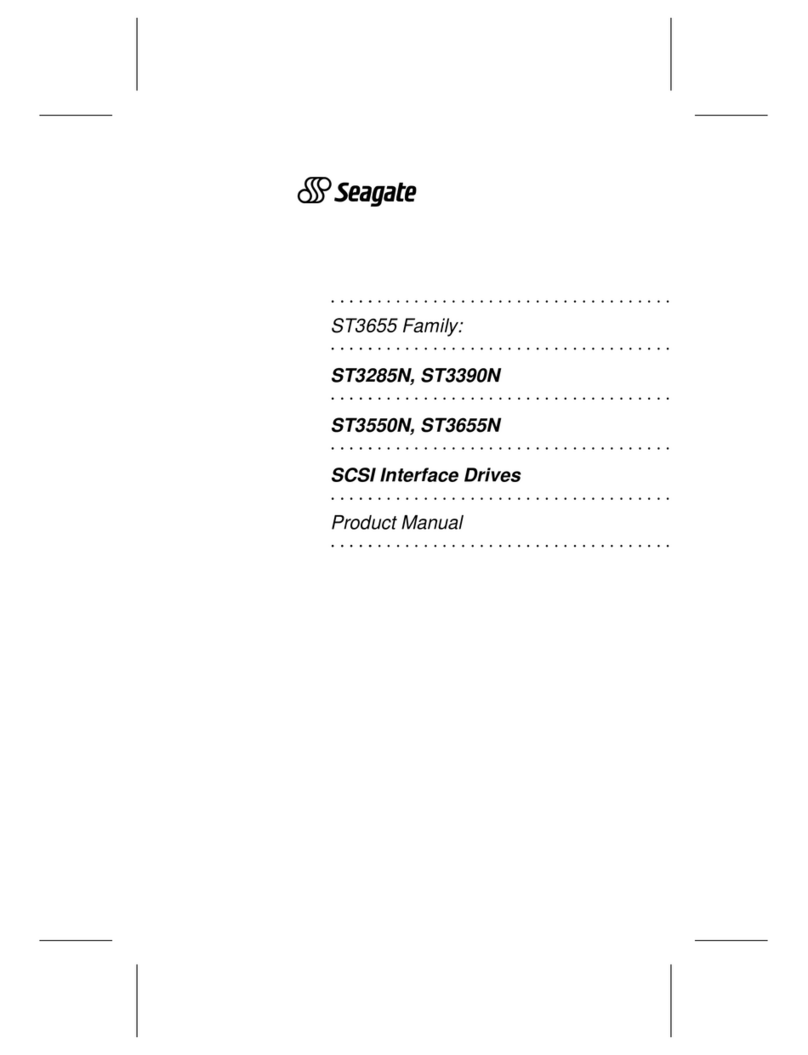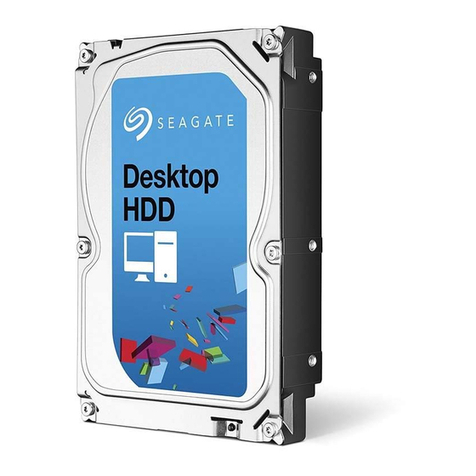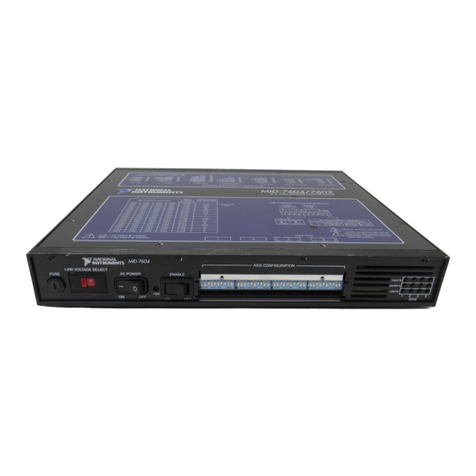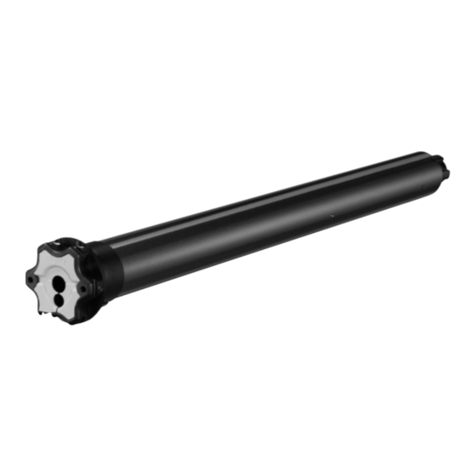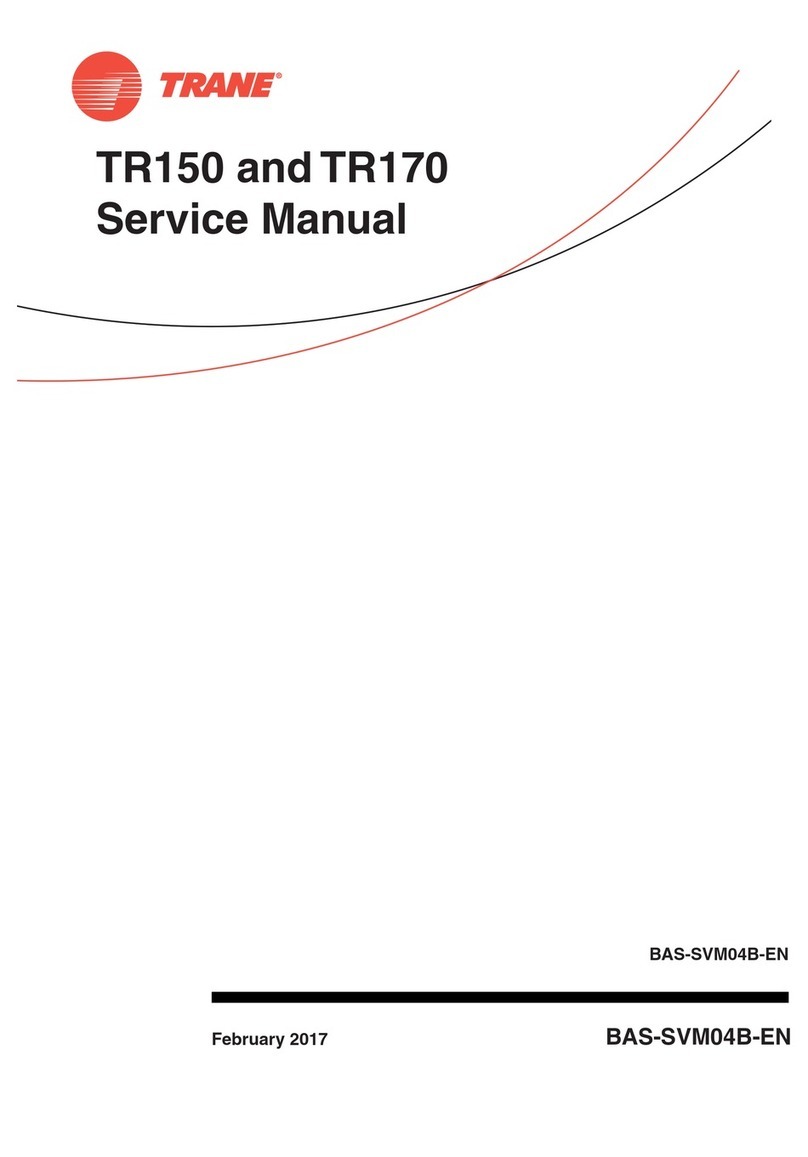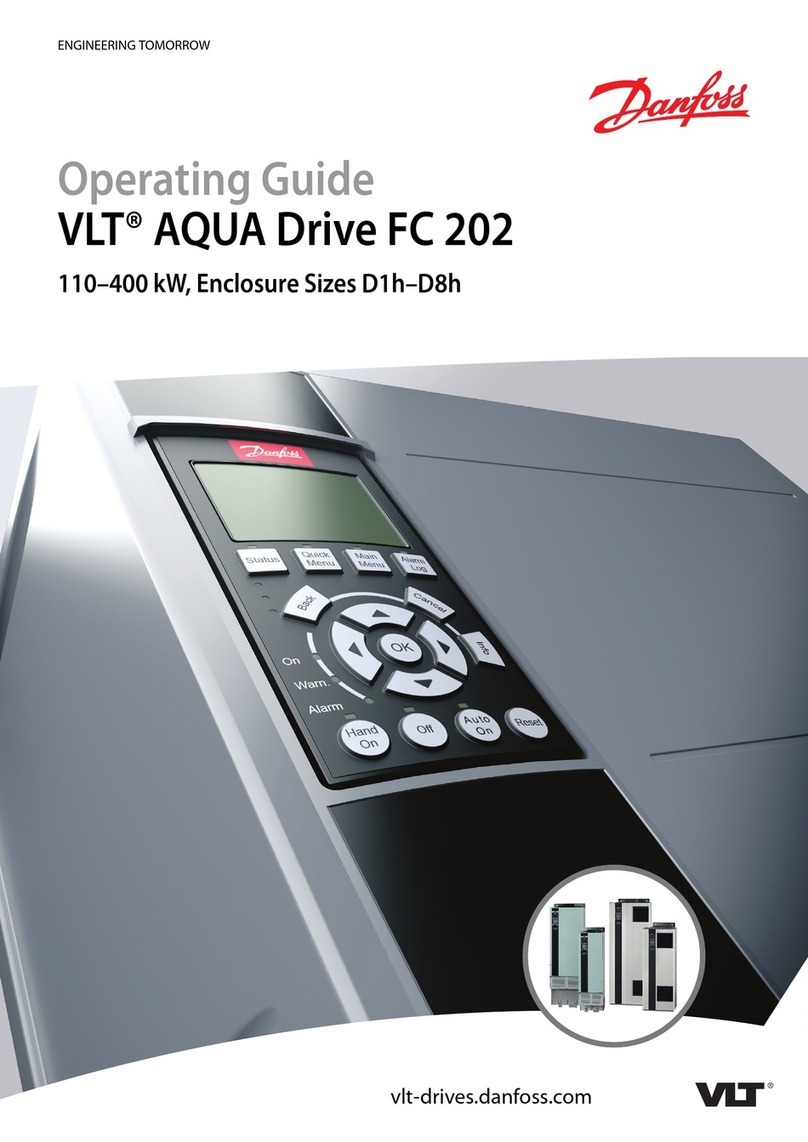
Introduction
This manual describes the functional, mechanical and interface specifi-
cations for the Decathlon 850 hard disc drive. The drive is referred to
throughout this manual by its model number, ST5850A.
The ST5850A is a high-capacity, high-performance, energy-efficient
drive that comes in the mini 3.5-inch form-factor. It is capable of meeting
the needs of PCI, VL, ISA and EISA bus computers.
The drivefeatures FastATA-2 performance. It supports PIOmode4 and
multiword DMA mode 2 transfer modes and multiple block read/write.
When the host chooses either of these modes, the drive is capable of
burst transfer rates of up to 16.6 Mbytes per second. Multiple block
read/write allows the drive to gather several blocks of data in cache and
transfers them in a single burst.
The interface is supported with a 256-Kbyte segmented cache and
embeddedservotechnology.Thesegmentedcacheaidstheflowofread
and write data. The embedded servo allows for accurate positioning of
the heads over the data and eliminates periodic thermal recalibration to
assure data transfer without interruption.
Energy-saving features are designed into the ST5850A drive. The drive
complies with the ATA interface specifications for Active, Idle and
Standby power modes. Power-saving modes are entered upon request
by the computer. Standbymode reducesthe drive’s powerconsumption
to a typical 1 watt while retaining drive accessibility. (A complete listing
of the ATA commands the drive supports is found on pages 27 and 28.
ATA commands and features with specific applications for the drive are
discussed in Section 3.0 on page 25.)
Decathlon drives conform to the standard 3.5-inch footprint but have a
0.75-inch (19-mm) high profile. The lower height gives the designer or
integrator more room for air circulation, other peripherals or a smaller
drive bay.
The following is a summary of the drive’s features:
Capacity
•854 Mbytes formatted
•LBA translation support
•Dual-drive emulation, which turns the drive into two logical drives for
DOS computers that limit the drive’s capacity to 528 Mbytes
•Available installation software to surpass the 528-Mbyte barrier im-
posed by some BIOSs
Decathlon 850 ATA Product Manual, July 1995 1
